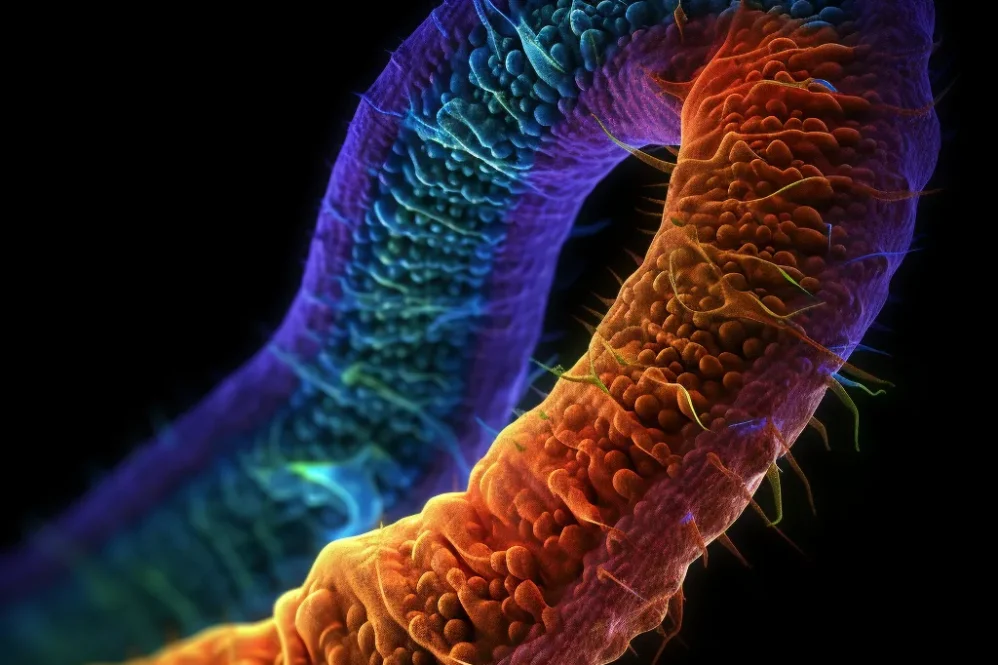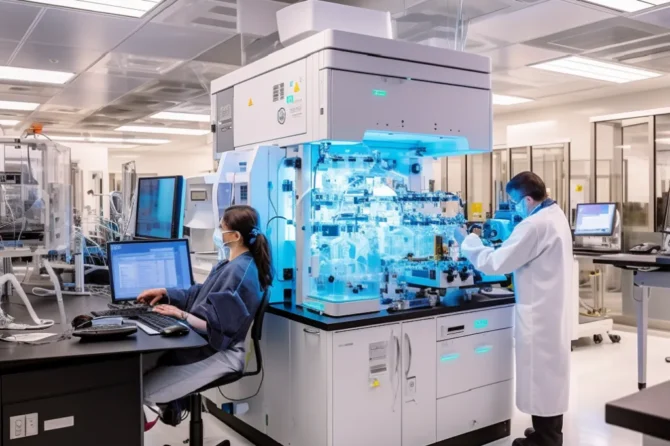Introduction
RNA interference (RNAi) is a powerful tool for studying gene function in various organisms, including parasites like Schistosoma mansoni. By selectively silencing target genes through the introduction of double-stranded RNA (dsRNA), RNAi enables researchers to investigate the impact of gene knockdown on the physiology and behavior of parasites. However, to ensure the reliability and interpretability of RNAi experiments, it is crucial to employ suitable control treatments that do not interfere with the biological processes of interest. The selection of appropriate control dsRNAs remains a challenge, particularly in the context of schistosome research.
In this study, we aimed to comprehensively evaluate the effects of three non-schistosome dsRNAs, namely neoR, ampR, and gfp, as controls in S. mansoni RNAi experiments. We investigated the morphological integrity of treated worms using confocal laser scanning microscopy (CLSM) and validated the effects on predicted off-target genes through reverse transcription quantitative polymerase chain reaction (RT-qPCR) analysis. The evaluation of these control dsRNAs would provide valuable insights into their suitability and shed light on the potential off-target effects they may induce.
Methods
To assess the effects of non-schistosome dsRNAs on S. mansoni, we treated the worms with three candidate control dsRNAs: neoR, ampR, and gfp. The worms were maintained in vitro and subjected to a treatment period of 22 days, with dsRNA administered every 2-3 days. A control group treated with DEPC-H2O was included for comparison. We analyzed 15 worm couples per condition, with each couple representing a biological replicate.
First, we employed CLSM to examine the morphological integrity of various tissues, including reproductive organs (ovaries and testes), gastrodermis, parenchyma, tegument, and gut. Representative images were captured to assess any structural differences between the control and dsRNA-treated worms. The CLSM analysis allowed us to visualize the impact of dsRNA treatments on the overall tissue organization and development of reproductive organs.
Next, we utilized RT-qPCR to measure the transcript levels of predicted off-target genes in the treated worms. We selected genes with the highest number of predicted off-target hits for each dsRNA and focused on genes known to be transcribed in paired adult schistosomes. The transcript levels of these potential off-target genes were compared between the control group and the dsRNA-treated groups, separately for females and males. This analysis enabled us to determine if the dsRNA treatments influenced the expression of off-target genes and provided insights into potential unintended effects.
Results
The CLSM analysis revealed no significant morphological differences between the control and dsRNA-treated S. mansoni worms after the 22-day treatment period. The reproductive organs, including ovaries and testes, showed normal development and structure in all groups. The division of the ovary into an anterior part containing immature oocytes and a posterior part containing mature oocytes was observed, indicating unaffected ovary development. The vitellaria, responsible for egg production, also exhibited no differences between the control and treated worms. In males, the structure of testicular lobes and seminal vesicles, as well as the occurrence of spermatogonia, appeared unaffected by the dsRNA treatments. Additionally, no phenotypic differences were observed in other tissues, including the tegument, parenchyma, and gut.
The RT-qPCR analysis of predicted off-target genes yielded interesting findings. The transcript levels of off-target genes in the neoR dsRNA-treated group exhibited a mixed pattern. In male schistosomes, the transcript levels of four out of six predicted off-target genes (Smp_00440, Smp_158130, Smp_159730, and Smp_310930) were reduced compared to the control group. However, no changes in the transcript levels of these genes were observed in treated females. On the other hand, Smp_174170 showed increased transcript levels in both male and female worms treated with neoR dsRNA. The upregulation of Smp_174170, annotated as homeobox protein Meis3-A, suggests a potential natural regulation of this gene by the parasite’s regulatory RNA machinery. The dysregulation of other off-target genes, such as Smp_004440 (putative neurexophilin and PC-esterase family member), indicates a potential influence of neoR dsRNA on important signaling pathways and neurotransmitter maintenance.
In the case of gfp dsRNA-treated worms, the transcript levels of selected off-target genes were minimally affected, with more pronounced changes observed in female schistosomes. Two genes, Smp_163550 (hypothetical protein) and Smp_342830 (putative CD109 antigen), showed reduced transcript levels in gfp dsRNA-treated females. The downregulation of Smp_342830, which plays a role in osteoclast proliferation and squamous carcinoma development in humans, suggests potential influences of gfp dsRNA on developmental processes in S. mansoni.
Conversely, ampR dsRNA showed minimal effects on the transcript levels of predicted off-target genes, maintaining comparable levels to the control group. Only a slight decrease in transcript abundance was detected in females for Smp_094360, a gene predicted to have six non-target dsRNA/siRNA hits. These findings indicate that ampR dsRNA is a suitable control in S. mansoni RNAi experiments, as it minimizes off-target effects and preserves the transcript profiles of predicted off-target genes.
Discussion
RNAi has become a widely used technique for studying gene function in various organisms, including parasites like S. mansoni. However, the selection of appropriate control dsRNAs is critical to ensure the specificity and interpretability of RNAi experiments. In this study, we systematically evaluated three non-schistosome dsRNAs (neoR, ampR, and gfp) as controls in S. mansoni RNAi experiments.
The CLSM analysis provided valuable insights into the morphological effects of dsRNA treatments on various tissues in S. mansoni. Importantly, no significant structural differences were observed between the control and dsRNA-treated worms, indicating that the treatments did not disrupt tissue integrity or development. The reproductive organs, including ovaries and testes, displayed normal morphology and organization, highlighting the unaffected development of these crucial organs. The lack of phenotypic differences in other tissues, such as the gastrodermis, parenchyma, tegument, and gut, further supports the overall integrity of the treated worms.
The RT-qPCR analysis focused on the transcript levels of predicted off-target genes to assess the potential unintended effects of dsRNA treatments. The findings revealed variable effects of the control dsRNAs on off-target gene expression. NeoR dsRNA showed mixed effects, with some off-target genes exhibiting reduced transcript levels in males but not in females. Unexpectedly, Smp_174170 showed increased transcript levels in both sexes, indicating potential complex regulatory mechanisms involving small RNAs that can activate gene expression. These findings suggest the need for careful consideration when selecting control dsRNAs, as they may influence the expression of off-target genes in a sex-dependent manner.
Gfp dsRNA exhibited minimal effects on the transcript levels of selected off-target genes, with more pronounced changes observed in females. The downregulation of Smp_163550 and Smp_342830 in gfp dsRNA-treated females highlights potential impacts on developmental processes and gene regulation. These findings emphasize the importance of thorough evaluation and consideration of control dsRNAs to avoid unintended effects on gene expression.
In contrast, ampR dsRNA demonstrated minimal effects on the transcript levels of predicted off-target genes. The transcript profiles of most off-target genes remained stable, validating ampR dsRNA as a suitable control in S. mansoni RNAi experiments. The limited influence on off-target gene expression suggests that ampR dsRNA does not interfere with the regulatory machinery of the parasite and preserves the transcript profiles of genes unrelated to the intended target.
It is worth noting that the evaluation of control dsRNAs should consider the specific physiological and developmental context of the RNAi experiment. The stage and sex of the parasites may impact RNAi efficiency and downstream analyses. In this study, we focused on adult S. mansoni worms, and sex-dependent effects on off-target gene expression were observed for neoR dsRNA. Future studies should further investigate the impact of different developmental stages and sexes on RNAi efficiency and the choice of control dsRNAs.
Conclusion
In conclusion, this study comprehensively evaluated the effects of three non-schistosome dsRNAs (neoR, ampR, and gfp) as controls in S. mansoni RNAi experiments. The CLSM analysis revealed no morphological differences between the control and dsRNA-treated worms, indicating the integrity of various tissues and reproductive organs. The RT-qPCR analysis of predicted off-target genes demonstrated variable effects of the control dsRNAs on gene expression, with ampR dsRNA exhibiting minimal off-target effects. Based on these findings, ampR dsRNA emerges as the most suitable control dsRNA for S. mansoni RNAi experiments, minimizing off-target effects and preserving the transcript profiles of predicted off-target genes. This study provides valuable insights into the selection of control dsRNAs and emphasizes the importance of careful evaluation and consideration of off-target effects in RNAi experiments with S. mansoni or other parasites.
If you need more information on this article click on the link below. This link will provide more extensive information and elaborate on the topic.





